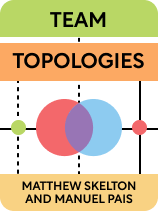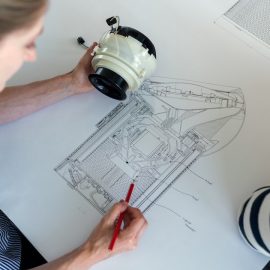

This article is an excerpt from the Shortform book guide to "Team Topologies" by Matthew Skelton and Manuel Pais. Shortform has the world's best summaries and analyses of books you should be reading.
Like this article? Sign up for a free trial here.
Does your organization have enabling teams? What difference do they—or could they—make?
In Team Topologies, enabling teams function as helpers that come alongside other teams to keep them running with efficiency and relevance. They stay up to date on the latest technologies and skills, and then they share this knowledge with the teams that need it.
Read on to understand the purpose and function of enabling teams.
Team Topologies: Enabling Teams
According to Team Topologies, enabling teams are charged with researching new skills and technological advancements and sharing that knowledge with other teams in your organization. By keeping other teams informed, enabling teams help keep your organization efficient and up-to-date.
(Shortform note: Creating enabling teams can contribute to a broader culture of ongoing education and learning in your organization. Since the 1990s, fostering learning internally has become an increasingly popular strategy for staying competitive in rapidly changing markets. Experts argue that in addition to practices such as creating enabling teams and programming, it’s important that you reinforce a learning culture by using your role as a leader to foster dialogue and debate.)
Authors Matthew Skelton and Manuel Pais note that, as opposed to dictating practices to other teams, your enabling teams should focus on giving (usually stream-aligned) teams the skills and information they need to determine their own best practices.
(Shortform note: It’s important that your enabling teams focus on teaching skills instead of dictating practices because, as Marcus Buckingham and Ashley Goodall argue in Nine Lies About Work, top-down goal setting in the workplace often backfires and leads to decreased productivity. This happens because goals and practices dictated by outsiders often don’t relate to a team’s established day-to-day workflow. Instead, allow teams to determine their own goals and practices, and bring in enabling teams to help them build the skills to achieve those goals.)
As Skelton and Pais argue, you should encourage your enabling teams to focus on a single, specialized knowledge area instead of researching new technologies in general. By focusing on a single subject, your enabling teams will be able to develop a higher level of expertise, which they can in turn share with other teams that encounter specialized problems.
For example, suppose a stream-aligned team at your organization is developing a mobile time-tracking app for your employees to use. While in the final stages of putting the app together, you could encourage them to draw on the expertise of an enabling team that specializes in mobile user experience (UX) design. By working together, the two teams can share skills and make sure the end product is as polished as possible.
(Shortform note: While Skelton and Pais suggest that specialized teams with high levels of expertise make the best enabling teams, research suggests that experts don’t always make great educators. Experts may often leave out bits of information that they assume novices already know, in a phenomenon known as the Curse of Knowledge. To help keep your enabling teams from falling into this trap, consider holding formal training sessions to help the members of these teams gain the skills they need to communicate their expert knowledge and grow as educators.)
Because your enabling teams have no software projects of their own to attend to, they will often have more time to research and develop new skills than your stream-aligned teams. This surplus time often allows a single enabling team to attend to the needs of multiple stream-aligned teams.
Once one of your enabling teams has passed its expertise on to another team, that team will no longer require the enabling team’s assistance to function. According to Skelton and Pais, depending on the scope of the project, this process may be a quick knowledge transfer or a long-term partnership.
(Shortform note: To ensure that enabling teams retain enough mobility to go where their help is most needed, experts recommend planning limited interactions between enabling teams and your other teams. Specifically, experts recommend that enabling teams only provide assistance the first few times another team works with a new system or concept. If the team that’s being educated still struggles to operate the new system after a few sessions, it may be a sign that it’s too complex to be added to their workload. When this happens, you should consider limiting cognitive load by delegating the new system to a new team.)

———End of Preview———
Like what you just read? Read the rest of the world's best book summary and analysis of Matthew Skelton and Manuel Pais's "Team Topologies" at Shortform.
Here's what you'll find in our full Team Topologies summary:
- How to set up your software development teams to work as efficiently as possible
- The four types of teams you should create as a project manager
- The three main ways your teams should interact with each other






